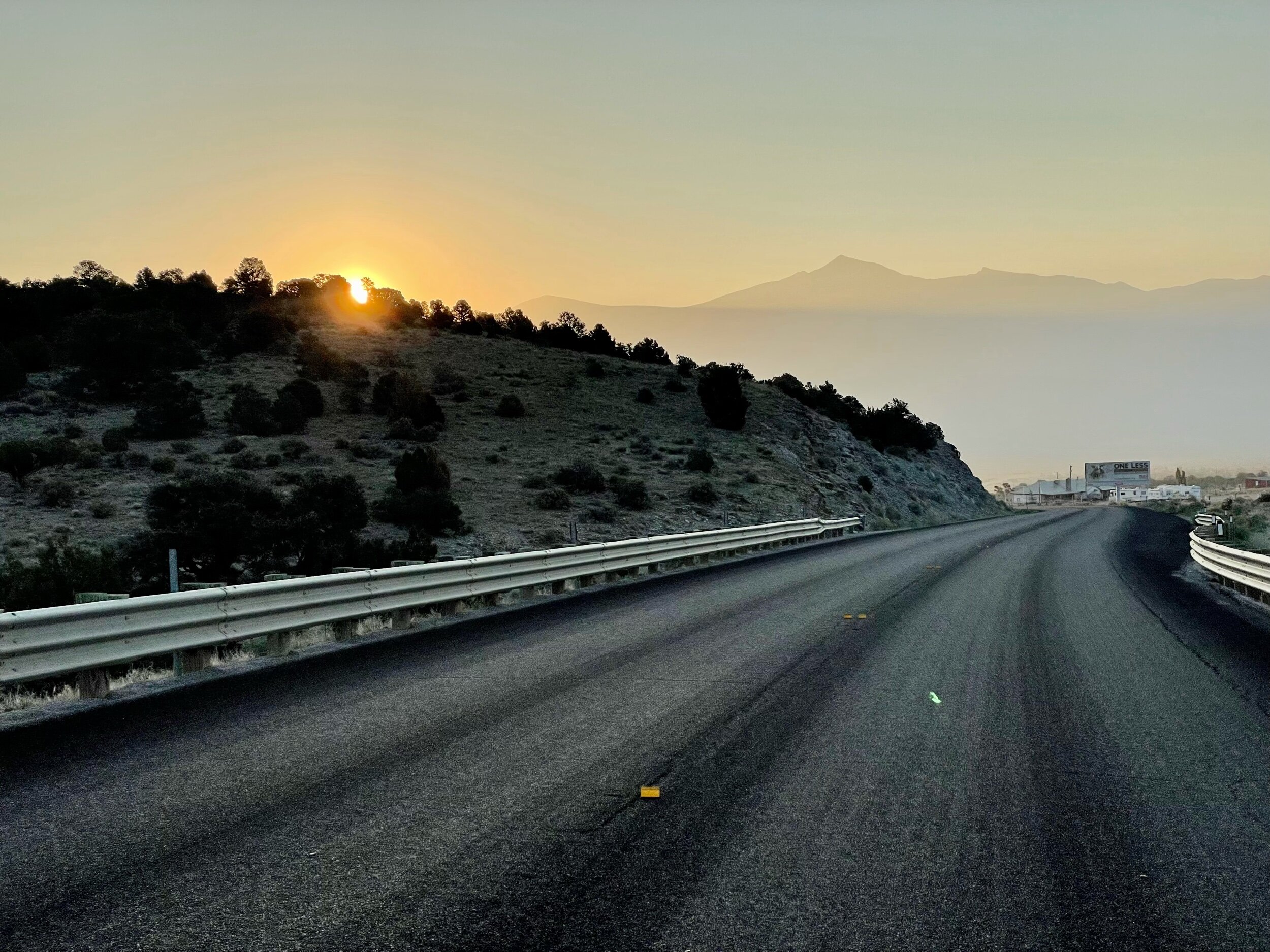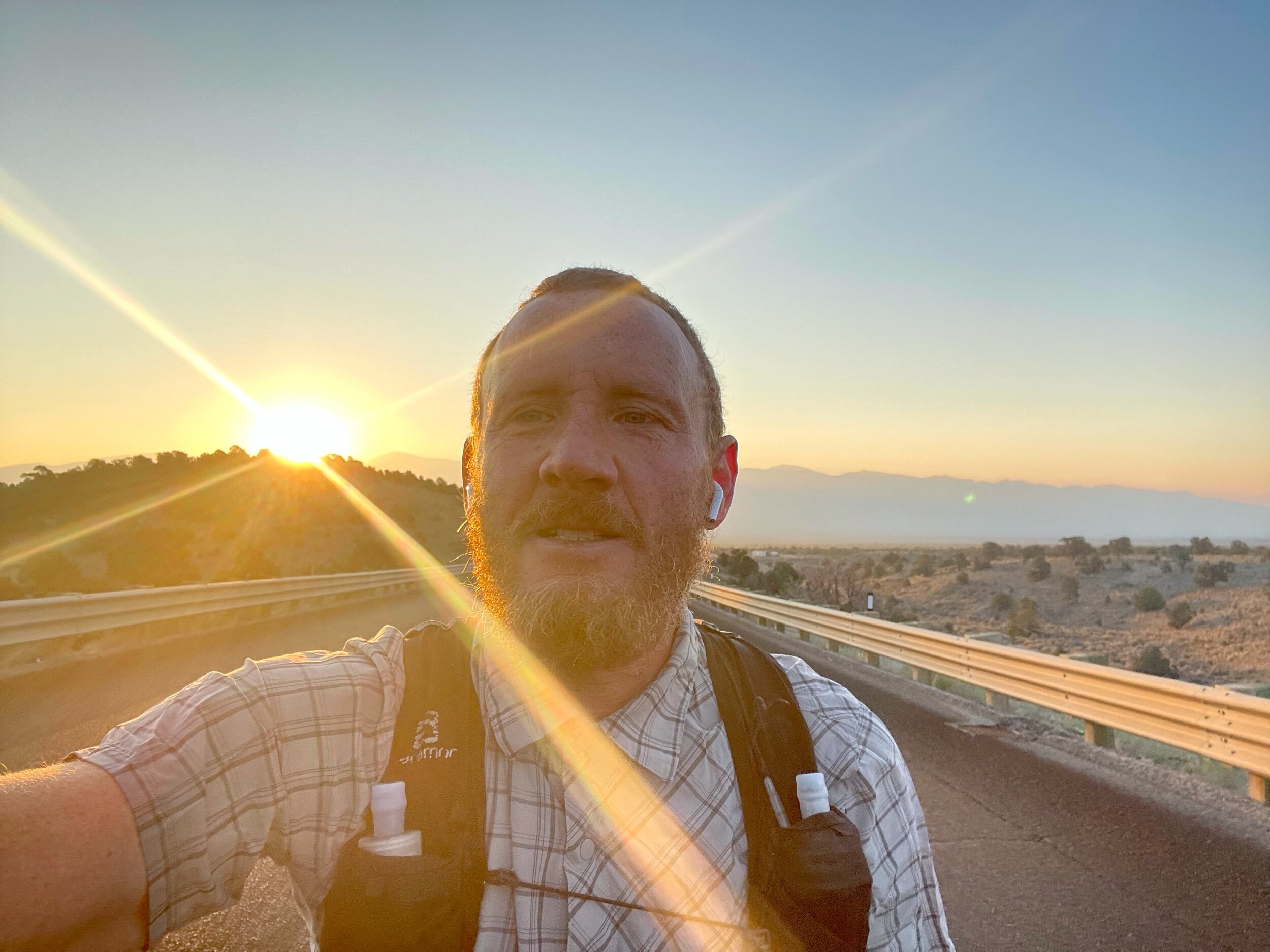Day 100 - Wednesday, September 8
Hard to believe it has been 100 days of running. Hard to believe we are in the 11th state of 12 on this journey. Hard to believe 2,800 miles of 3,400 miles are complete. The end is near and I’m enjoying every moment out here as it is not going to last much longer.
The mountain crossing yesterday put a big hurt on my body. The cumulative fatigue and/or all the altitude and elevation last few days and my legs were aching last night. I passed out at 7pm but woke at 11:15 because of the stiffness. I tossed and turned until 3am and decided its now or never. Leaving the RV on the desert/valley floor at around 5,000’, I wandered into the darkness and then back onto Highway 50 as it crossed the valley floor before beginning another mountain range crossing. The temperature in the morning is perfect - low 50’s and its easy to just jog/walk and make great progress. I reached Connors Pass at 7,722’ by 8am but I was spent. Chris was waiting at the top and he had the perfect elixir; freshly made chicken soup and fruit smoothie. Wow, after the perfect meal I started feeling better and wash strong the rest of the day. My maxim that just because you feel bad at night doesn’t mean you will feel bad in the morning is now reduced to a meal potentially changing everything.
The first waypoint on Highway 50 was the town of Ely 150 miles away from Delta. I had planned on 5 days but we made in 4 so we have a little wiggle room going forward. Even so, we need to keep up around 35 miles per day until we reach the Pacific Ocean on September 26.
One of my biggest issues right now is the dust. I am coughing non stop and all I can taste is the dust that is everywhere in the desert.
That’s all for tonight as I get ready to sleep and repeat what I have done for 100 days.
Thank you for your ongoing support.
Cheers,
David
Morning brief and views of another glorious sunrise on the desert/mountains
Ely is Waypoint 1 on Highway 50 - Eureka is Waypoint 2 - Austin is Waypoint 3
Another abandoned cabin on the high desert
The view from the road up to Connors Pass
The old road over Connors Pass
Chris joined me for a bowl of his chicken soup which included leftover salad from night before. I don’t know how he got away with that but it was delicious!
I came upon a road that led to the foothills of a range I will be going over tomorrow that led to a town called Ward.
By 1875, Ward was the largest town in White Pine County boasting a population of 1,000 and a large, fancy hotel. Education was a priority so an abandoned red-light district house was converted to a schoolhouse. The Martin White Company of San Francisco purchased all mines during the summer of 1875 and that company was the main producer for many years. New discoveries helped propel the town to its peak during 1877. Ward’s population reached a high of close to 2,000. Also in 1877, a city hall was constructed and Wells-Fargo opened an office. The 601 Vigilantes kept the town virtually crime-free. The name came from six feet under, no trial, and one rope. The 601 meted out quick justice, and Ward’s crime rate dropped to zero. Ward began to decline as 1878 progressed. The combination of vanishing ore deposits and a new boom at Cherry Creek spelled doom for Ward. By 1880, the population had shrunk to 250. A huge fire on august 18, 1883 destroyed the city hall, the school, and virtually all of downtown Ward. By 1885 only one business was left in town, and the population stood at 25. Ward was basically a dead town until 1906 when all of the Martin White holdings were sold to the Nevada United Mines Company. This revival continued until 1920. Today, Ward is an active mining site. Unfortunately, the town is off limits, fenced off by the operating company. The Ward Cemetery, one mile east of the townsite, is well worth a stop. Many interesting wooden markers remain and are partially legible. It is very sad to note that many of the graves are those of very young children who fell victim to the many different diseases prevalent in early mining camps.
And then in the middle of the desert a stream of cold, fresh water runs through
The town of Ely in the distance under a thick cloud of dust created by mining and the windy conditions
Tortellini with sausage and red sauce - delicious!





















